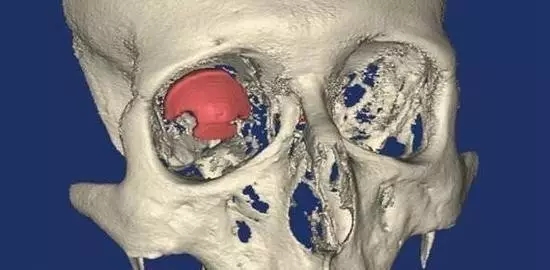Release date: 2016-08-26 Recently, experts from the Academic Hospital of the University of Leuven in Belgium used computer-aided design and 3D printing technology to develop the world's first special 3D printing eye for a 68-year-old male patient, with a manufacturing cost of only 1,300 euros. Previously, the British company Fripp had claimed that they were developing 3D printing technology to print fake eyes, but it seems that it has not been officially used until now. It is well known that artificial eye manufacturing is hand-made because of the low demand, and a country often has only a few specialists capable of producing artificial eyes. The expert at the University Hospital of Leuven, Belgium, can only make about 70 different artificial eyes each year. The production process is extremely complicated: the iris needs to be hand-drawn to match the other eye, and it is difficult to choose the right white for the sclera. Small blood vessels are usually counterfeited using tiny red cotton threads. Ilse Mombaerts, professor of orthopedic surgery, said: “The eye is a luxury, and communication with the artist is critical to the patient's new eye design. The ophthalmologist who performs the surgery usually works with the artist who designed the eye.†Until now, the production of prosthetic eye requires the use of dental impression materials to obtain an eyeless imprinting mold, and the eye sockets it provides are often not precise. The traditional method of measuring the orbit is to use an alginate mold, which also puts a lot of pressure on the delicate tissue of the patient's eye socket, which is very time consuming. Today, experts use CBCT (cone beam computed tomography) scans to create 3D printed models. CBCT is a very common aid in dental surgery, which can model the patient's mouth without causing damage. The model is printed by the hospital's 3D engineer and sent to the eye specialist. The expert will then use this as a reference to manually create a specific artificial eye for the patient. However, the academic hospital of the University of Leuven in Belgium said that due to technical limitations, they are more using 3D printing modeling functions, and hope that in the future, 3D printing can be directly used for carbon materials commonly used in dentures. Source: NetEase Pumpkin Seed Kernels,Pumpkin Seeds Kernels Roasted,Shine Skin Pumpkin Seed Kernels,Pumpkin Seeds Or Kernels Wuyuan county dafeng oil food co.,ltd , https://www.dafengfood.com.cn

Belgian doctors develop the world's first 3D printed pros
